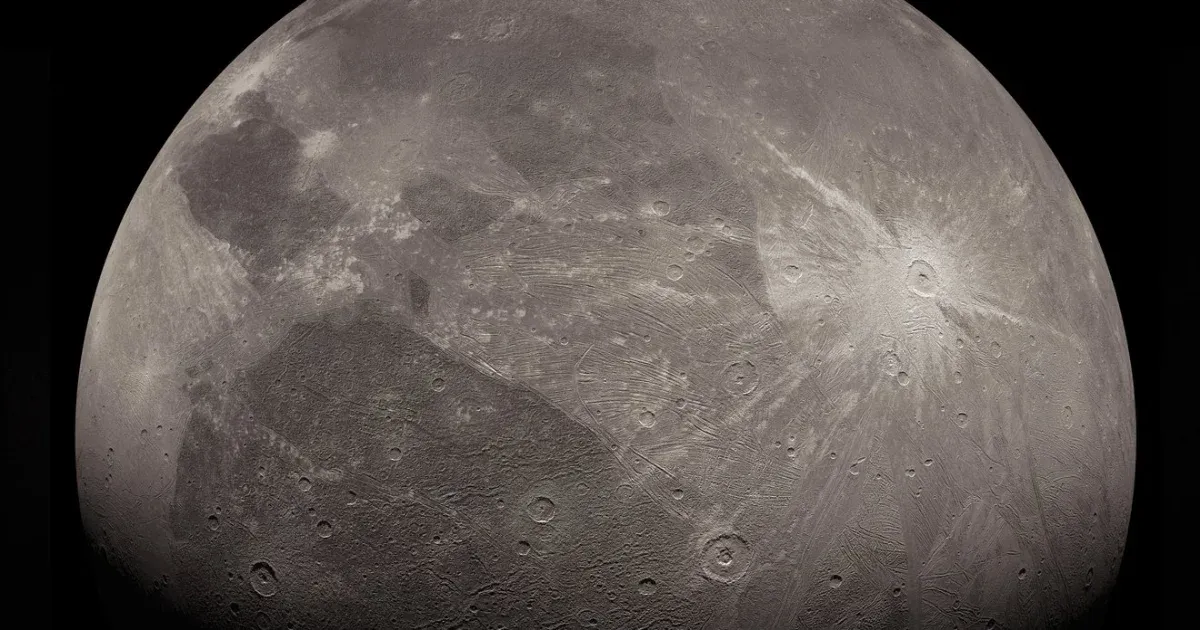November 2, 2023 – 10:32 pm
A new study reveals that the ocean beneath the surface of the moon Ganymede, one of the largest moons in the solar system, may hide organic compounds. In June 2021, NASA’s Juno spacecraft’s Jovian InfraRed Auroral Mapper (JIRAM) spectrometer recorded data that may indicate this. LiveScience writes.
Ganymede is the largest moon in the solar system, with a diameter of 5,268 km, making it larger than Mercury. Beneath the icy surface lies a vast ocean.
During the 2021 flyby, Juno also discovered salts such as sodium chloride, ammonium chloride, sodium bicarbonate, and possibly aliphatic aldehydes. Discovering the compounds could help astronomers better understand how the Moon formed and evolved, and could shed light on the chemical composition of the subsurface ocean.
Jupiter has such a strong magnetic field that it is difficult for organic compounds to remain on the surface of its moons. However, the area around Ganymede’s equator appears to be shaded enough, so it may be an exception. The presence of the compounds may indicate hydrothermal activity beneath the icy surface, or interaction between the subsurface ocean and rocks within the planet.
However, processes other than the salty interior ocean can produce these salts and organic compounds. Because the Moon’s crust is much thicker than Europa’s, interaction between the deeper interior and the surface may not be responsible for surface formation. Alternatively, it may reflect interaction between the shallow crust and the surface, or exogenous interaction, i.e. deposition from outside the Moon.












































